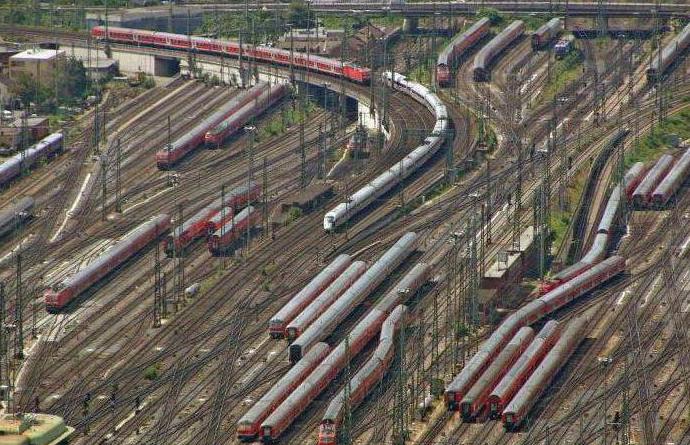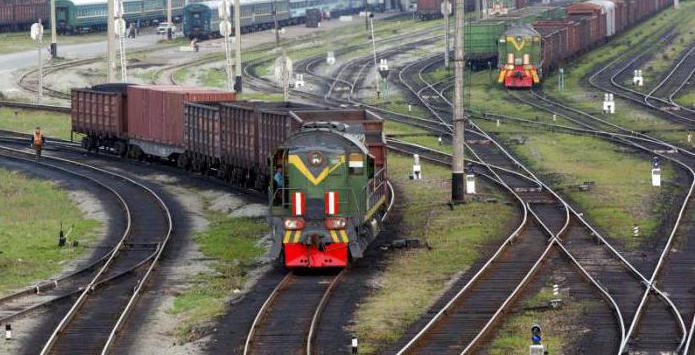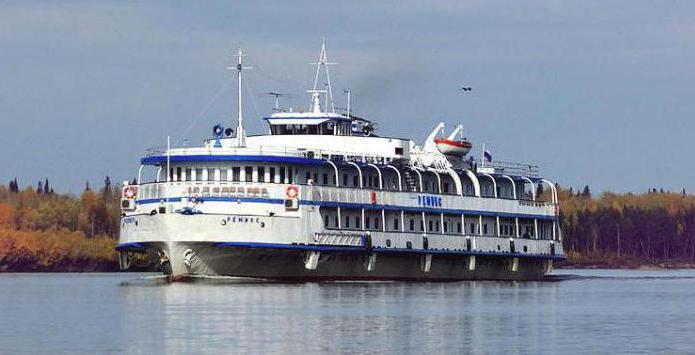The combined sectors of the economy, which produce a variety of services, make up the infrastructure complex. It is divided into a service sector and a communication system, which includes communications and transport. The latter, in turn, consists of several types: pipeline, air, sea, river, road and rail, from which the country's transport system is formed.

Transport
The value of the infrastructure complex is difficult to overestimate. Types of transport are connected by transport nodes. The infrastructure complex in terms of a single transport system includes 160 thousand kilometers of railways, 680 thousand kilometers of paved roads for cars, 100 thousand kilometers of waterways inside the country, more than 220 thousand kilometers of pipelines.
This industry employs four and a half million people. Rail and pipeline transport lead in freight turnover, moving huge volumes of cargo over long distances. Road transport lags slightly behind them, although in passenger traffic it occupies 60 percent of the total number of passenger kilometers, and the volume of passenger traffic is 97 percent.

Transport density
The regions of Russia are significantly different from each other. If we consider the development of the transport system, sometimes the density of kilometers of communication per thousand square kilometers differs by more than ten times. For example, on average in Russia, the density of roads is 28 kilometers per 1 thousand square kilometers, but in the Far Eastern region it is five per thousand square kilometers, and in the Central Chernozem Region it is 172. The 9th grade infrastructure complex in Russia can be studied in its transport hypostasis just by opening a map of roads or railways. You can immediately see where the paths are denser.
The constituent entities of the Federation, which have the densest system of roads, are: Moscow, Tula, Vladimir, Belgorod, Lipetsk, Kaliningrad regions; it is quite well developed in the North Caucasus, Northwest, Volga and Volga-Vyatka regions. Here you can isolate the three main directions of the entire transport system of Russia: east-west (latitudinal), north-south (Central European meridional - with access to Moldova, Ukraine and the Caucasus), north-south (along the Volga and around). The infrastructure complex in the field of transport is much less developed beyond the Urals.
Railway
Rail transport is the leading one in Russia, since these are the purely geographical features of the country. The advantages of this transport are its high load capacity, low cost and no dependence on the weather. Railways of the European part of Russia are built in the form of a giant wheel, the center of which is Moscow, eleven highways diverge from it like spokes. The infrastructure complex is well supported by a well-thought-out railway system.

But this applies only to the European part. Latitudinal highways stretch to the east - to Yekaterinburg, Orenburg and Chelyabinsk, then to Siberia, which after the collapse of the Soviet Union partially ended up abroad. In Siberia, there is only one completely Russian section - Omsk-Tyumen-Yekaterinburg, and it is not able to provide sufficient transport links between the eastern and western regions of the country.
Many regional railway sections inside the country (some very long and important) were closed during Perestroika, and now, of course, they were destroyed without maintenance and repair. And if you take into account that they were clearly not enough in Siberia under the Soviet Union, you can be sure that the role of the infrastructure complex in this part of the country should be strengthened.
On the highway
One of the most expensive modes of transport at cost is automobile. Among its advantages are maneuverability and speed. Efficiency, however, depends both on the quality of the roads and on the density of the stream. If we take into account that one tenth of all Russian roads is a primer, and a third has a low-quality hard surface, then this type of transport in the infrastructure sector requires development.

The twelve largest and high-quality roads diverge in different directions from Moscow, the European part of the country is covered with them like a dense network, but the east, the density decreases, and there are few roads beyond the Urals. And still there is no such motorway that would cross the country from east to west. Russia's infrastructure complex is still weak in this regard.
By the seas
Sea transport is quite cheap due to the huge cargo capacity of ships and relatively direct routes. However, significant repairs and construction costs of both ships and ports are constantly required. And here is an absolute dependence on natural conditions.
Russia already has 39 large ports, but only 40 percent of them can accept large ships. The remaining ports are shallow. Here, the geography infrastructure complex is also failing. Grade 9 can trace sea transport routes from port to port using a map: only half of Russia's own ports can meet the country's needs.

Ports
The Pacific basin, where large ports are located - Nakhodka, Vladivostok, Vanino, Vostochny, and also a quarter of the entire Russian fleet is concentrated here in freight turnover. In second place is the Baltic basin with the ports of Kaliningrad, Vyborg, and St. Petersburg. The geographical location is very favorable, but few ports, and their capacity is small. In any case, maritime transport adorns the composition of the infrastructure complex.
The ports of the Black Sea (Novorossiysk, Sevastopol) export mainly oil, and the Navy reigns here. But the most important is still the basin of the Arctic seas, where Northern Sea Route which provides all necessary areas of the Far North.
Other modes of transport are not available here for the most part, except for air, but it is often powerless, as weather conditions are rarely favorable. Russia's infrastructure complex requires comprehensive development: the country is huge, vast distances, geography for the most part uncomfortable, and the needs are also relevant.
Along the rivers
Where full-flowing rivers flow, river transport is the hope and support of the infrastructure complex. This transport is profitable, especially if the goods do not require fast delivery. For example, grain, oil, timber and more. The map shows where river transport is most developed: these are mainly northern, Siberian rivers and, of course, the Volga with its tributaries.
The main of the shipping basins is the Volga-Kama, it is like the core of the entire deep-water river system of the European part of Russia. The largest ports: all three Moscow, Nizhny Novgorod, Samara, Kazan, Astrakhan and Volgograd. Also important for the functioning of the transport infrastructure is the water basin of the northern part of Russia, where cargo is transported along the rivers Vychegde, Sukhon and the Northern Dvina.

Great Siberian rivers
Despite the fact that the volumes of work performed put Ob, Yenisei and Lena only in second place, their importance in infrastructure is extremely high.Navigation itself is shorter here, only 120-200 days a year, but winters are longer. Among the great Siberian rivers, the most important (and the largest in the country) is the Ob with a tributary of the Irtysh. The main ports and marinas for cargo and passenger flows are: Biysk, Barnaul, Novosibirsk, Tomsk, Samus, Nizhnevartovsk, Surgut, Labytnangi, Omsk, Tobolsk, Tyumen, Khanty-Mansiysk. There is no developed network of railways in Siberia, and there are no roads either, therefore, transshipment and dispatch of goods along the waterways of Siberia is extremely important.
The Yenisei is often the only way along the Krasnoyarsk Territory, where regular shipping is carried out over three thousand kilometers. Cargo flows from Krasnoyarsk to Dudinka. Ports and marinas: Abakan, Krasnoyarsk, Strelka, Maklakovo, Yeniseysk, Turukhansk, Igarka, Ust-Port. Sea vessels rise to the very Igarka. In Tuva, the Yenisei is covered by cargo and passenger traffic through local shipping with its main pier, Kyzyl. The Lena River, and today the main transport artery of all Yakutia, the entire northern delivery takes place with its help. Main ports: Osetrovo, Kirensk, Lensk, Olekminsk, Pokrovsk, Yakutsk, Sangar, Tiksi, Bodaibo, Khandyga, Dzhebariki-Khaya.
On the wings
At impressive distances air Transport gives a big gain in time, it is also indispensable in the milked areas of Siberia and the Far East, often being the only means of communication. There are five of the most massive passenger flows from Moscow: Caucasian, Southern, Eastern, Central Asian and Western. Thirty percent of all shipments of the country are made from four airports in Moscow: Bykovo, Vnukovo, Domodedovo and Sheremetyevo.
Also major air hubs are St. Petersburg, Samara, Ufa, Mineralnye Vody, Yekaterinburg, Nizhnevartovsk, Sochi, Tyumen, Surgut, Krasnoyarsk, Novosibirsk, Khabarovsk, Irkutsk, Vladivostok. During the Soviet Union, small airports operated daily in each district center of a region or region and in all cities. Unlike today, this transport was not expensive for passengers. Now, for example, in the huge - the size of France - Altai Territory, there is only one - in Barnaul, and that requires reconstruction.

Communication
The most important types of communication in the Russian Federation are telephone and mail. Russian Post is a rather extensive network: more than 50,000 enterprises, of which two thirds are in villages. But in providing the population with telephone services, Russia has always been significantly inferior to other countries, and even now inferior.
On the other hand, computer technologies are now taking giant steps forward, and cellular mobile communications are developing rapidly, due to which this problem has been practically solved. Moreover, the development of satellite communications is also very promising.
Service sector
This area includes trade and catering - shops, canteens, cafes; consumer services - ateliers, repair shops, baths, hairdressers; Housing and communal services - provision of housing and its improvement; art and culture - exhibition and concert halls, libraries, theaters, television and radio; science and education - universities, schools; physical education and healthcare - hospitals and clinics, stadiums and sports complexes; social security - orphanages and nursing homes, boarding schools, pensions and insurance; credit and financial sphere - insurance organizations and banks, investment funds; public administration - law enforcement and defense. This entire infrastructure complex consists of service industries.
